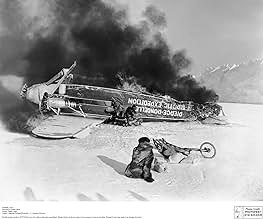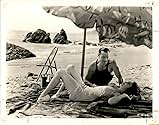Jack Bradon is tasked to reach the South Pole with a dirigible.Jack Bradon is tasked to reach the South Pole with a dirigible.Jack Bradon is tasked to reach the South Pole with a dirigible.
- Awards
- 2 wins total
Emmett Corrigan
- Rear Adm. John S. Martin
- (as Emmet Corrigan)
Richard Alexander
- Radio Operator
- (uncredited)
Bess Flowers
- Party Guest
- (uncredited)
George 'Gabby' Hayes
- Parade Official
- (uncredited)
Edward Hearn
- Admiral's Aide
- (uncredited)
Selmer Jackson
- Lt. Rowland
- (uncredited)
Eddie Kane
- Lakehurst Radio Announcer
- (uncredited)
Kenneth MacDonald
- Lt. Fogarty
- (uncredited)
Adrian Morris
- Dirigible 'Los Angeles' Crewman
- (uncredited)
William H. O'Brien
- Sailor
- (uncredited)
Broderick O'Farrell
- Doctor
- (uncredited)
- Director
- Writers
- All cast & crew
- Production, box office & more at IMDbPro
Featured reviews
Aside from featuring Fay Wray BEFORE she became famous in King Kong, the movie has value as historical record, because of the scenes of the U.S. Navy's dirigible, LOS ANGELES. The LOS ANGELES served a dual role in the film, first as the fictional PENSACOLA, destroyed in a storm at sea, and then as her real self. The loss of the PENSACOLA is prescient in a way, because her successors, the very real AKRON and MACON, which had yet to enter service when the movie was made, were subsequently both lost at sea in storms, bringing an end to rigid airships in the U.S. Navy. A predecessor, the SHENANDOAH was lost in 1928 in a storm over Ohio.
When this movie was made, only the LOS ANGELES was in service. The movie shows excellent closeup film of the ship mooring at Lakehurst N.J. as well as her experimental trapeze which allowed an aircraft to moor to the ship while in flight. This feature was incorporated in AKRON and MACON, along with a hanger to stow the planes aboard. These two, the biggest in USN service at 800 feet could each carry 3-4 planes. The planes could be "captured" on the trapeze, brought inside and then launched from their trapeze. An amazing sight to see!
When this movie was made, only the LOS ANGELES was in service. The movie shows excellent closeup film of the ship mooring at Lakehurst N.J. as well as her experimental trapeze which allowed an aircraft to moor to the ship while in flight. This feature was incorporated in AKRON and MACON, along with a hanger to stow the planes aboard. These two, the biggest in USN service at 800 feet could each carry 3-4 planes. The planes could be "captured" on the trapeze, brought inside and then launched from their trapeze. An amazing sight to see!
As we watch the Twentieth Century disappear in our wake, we're going to find films like this more and more precious. I mean, can you imagine? -- Here's a film that takes the airship absolutely seriously as an equal partner with the airplane. Here's a film that shows you basically how an airship was constructed and what it looked like inside, and all that as part of the plot! And if you're going to interrupt the main plot with a soap opera, who better to put in front of your eyes than the beautiful Fay Wray? And what a great way to get out of the romantic sub-plot's basic dilemma -- nice, clean, and fast. All things considered, a more than satisfying way to spend an evening.
The "7" is strictly for the amazing aerial scenes involving airships or dirigibles (like the Hindenberg that crashed at Lakehurst, N.J.). In fact, all of the aviation moments are skillfully photographed for dramatic effect, especially the fierce electrical storm that destroys one of the dirigibles by pulling it apart in mid-flight.
The romance on the ground is far less convincing than the action sequences involving pilots flying to the South Pole. FAY WRAY is the femme lead, hopelessly in love with hubby RALPH GRAVES and begging his best friend JACK HOLT not to use him on his expedition to the South Pole. She's sick of staying behind and worrying about him and his grandstanding exploits. Unfortunately, none of the domestic scenes between Graves and Wray bear any semblance to reality--her weeping gets pretty tiresome before the plot is resolved.
But FAY WRAY was unquestionably a beautiful woman and director Frank Capra gives her plenty of close-ups. Her role is not particularly well written and she has trouble being anything more than a decorative ploy. RALPH GRAVES is not totally convincing as a reckless pilot. There's an awkwardness about his acting that is somewhat disconcerting here. JACK HOLT handles his role with authority and good screen presence.
A fascinating look at early aviation exploits using dirigibles and balloons when they were seriously considered to be the modern methods of aviation. Well worth watching.
The romance on the ground is far less convincing than the action sequences involving pilots flying to the South Pole. FAY WRAY is the femme lead, hopelessly in love with hubby RALPH GRAVES and begging his best friend JACK HOLT not to use him on his expedition to the South Pole. She's sick of staying behind and worrying about him and his grandstanding exploits. Unfortunately, none of the domestic scenes between Graves and Wray bear any semblance to reality--her weeping gets pretty tiresome before the plot is resolved.
But FAY WRAY was unquestionably a beautiful woman and director Frank Capra gives her plenty of close-ups. Her role is not particularly well written and she has trouble being anything more than a decorative ploy. RALPH GRAVES is not totally convincing as a reckless pilot. There's an awkwardness about his acting that is somewhat disconcerting here. JACK HOLT handles his role with authority and good screen presence.
A fascinating look at early aviation exploits using dirigibles and balloons when they were seriously considered to be the modern methods of aviation. Well worth watching.
Return to the heady days of the 1920s, when the strategic bombers of World War I were still seen as a viable alternative to the rickety airplanes of the day. While the acting is wooden and stereotypical (brave fly boy, conservative large "ship" commander, frail stay at home wife), just seeing the footage of the long-gone rigid airships is worth the tariff.
The best shot is near the beginning, when the camera pans upward, past round naval observation balloons, surprisingly modern non-rigid 'blimps' flying in formation, and then (above them all) the massive (larger by a factor of five or more) dirigible of the title.
Scenes of the real dirigible flying, landing, dropping naval "parachute men", and hooking up to the mooring mast are also worth the time.
Not so much the rest of the movie. Period special effects do not hold up well under modern scrutiny, and the silly pining away of Fay Wray really gets in the way.
(Odd too is the fact that the Review Board passed on a plot line involving an obviously cheating on her husband woman, including a racy scene at the beach where the two have been sharing an afternoon swimming, barely clad by 1930s standards). Perhaps this was during the Hays to Breen transition period, and it slipped under the radar.)
Note that the poor USS Pensacola (a mythical Navy airship; there was a cruiser by that name but never an aircraft) doesn't catch fire, despite the dramatic breakup of the structure. US airship were filled with helium (due to the almost monopolistic corner of the world's supply of helium by the US), and although they suffered through a series of dramatic crashes (Shenandoah, Akron, Macon), none of them caught fire a la the Hindenburg.
Buy it in the newly released DVD for the flying, and try to ignore the rest. (Oh, and Fay Wray looks far better as a brunette than she ever did as a blonde.)
The best shot is near the beginning, when the camera pans upward, past round naval observation balloons, surprisingly modern non-rigid 'blimps' flying in formation, and then (above them all) the massive (larger by a factor of five or more) dirigible of the title.
Scenes of the real dirigible flying, landing, dropping naval "parachute men", and hooking up to the mooring mast are also worth the time.
Not so much the rest of the movie. Period special effects do not hold up well under modern scrutiny, and the silly pining away of Fay Wray really gets in the way.
(Odd too is the fact that the Review Board passed on a plot line involving an obviously cheating on her husband woman, including a racy scene at the beach where the two have been sharing an afternoon swimming, barely clad by 1930s standards). Perhaps this was during the Hays to Breen transition period, and it slipped under the radar.)
Note that the poor USS Pensacola (a mythical Navy airship; there was a cruiser by that name but never an aircraft) doesn't catch fire, despite the dramatic breakup of the structure. US airship were filled with helium (due to the almost monopolistic corner of the world's supply of helium by the US), and although they suffered through a series of dramatic crashes (Shenandoah, Akron, Macon), none of them caught fire a la the Hindenburg.
Buy it in the newly released DVD for the flying, and try to ignore the rest. (Oh, and Fay Wray looks far better as a brunette than she ever did as a blonde.)
Lakehurst, the setting for much of this film was the epicenter of American ballooning and dirigibles, before the second world war and through it as well. A recent book, _They sailed the skies : U.S. Navy balloons and the airship program_ led me to this film, since it represents an easy way to get a look at some of the men and machines in action. Frank "Spig" Wead is the writer and Frank Capra directs. Wead of course was a flyer himself and only turned to writing after a crash broke his neck, crippling him. See WINGS OF EAGLES by John Ford for a dramatization of his life. The early sound era is not known for the sleekness of it's screen story-telling, but if you have interest in the history of zeppelins, or pre-WW2 aviaton, this film is worth watching.
Did you know
- TriviaThe production was shot during a California heat wave. To form vapor on the breath and give the impression that the pilots were in the Antarctic, the performers were given lumps of 'dry ice' (frozen carbon dioxide) in metal boxes to put in their mouths. Hobart Bosworth found the box cumbersome and simply put the ice in his mouth. He lost his tongue and most of his lower jaw.
- GoofsThe name of this Dirigible was the USS Pensacola but there was already a USN heavy cruiser of the same name that was in service since 1928 when this movie was made. The Navy does not assign duplicate names to ships/air ships in service at the same time.
- ConnectionsFeatured in Frank Capra's American Dream (1997)
- SoundtracksAnchors Aweigh
(1906) (uncredited)
Music by Charles A. Zimmerman
Lyrics by Alfred Hart Miles and R. Lovell
Played during the opening credits and often in the score
Sung by guests at a party
Details
- Release date
- Country of origin
- Language
- Also known as
- Dirigible
- Filming locations
- San Gabriel Valley, California, USA(South Pole scenes)
- Production company
- See more company credits at IMDbPro
Box office
- Budget
- $1,000,000 (estimated)
- Runtime1 hour 40 minutes
- Color
Contribute to this page
Suggest an edit or add missing content






































